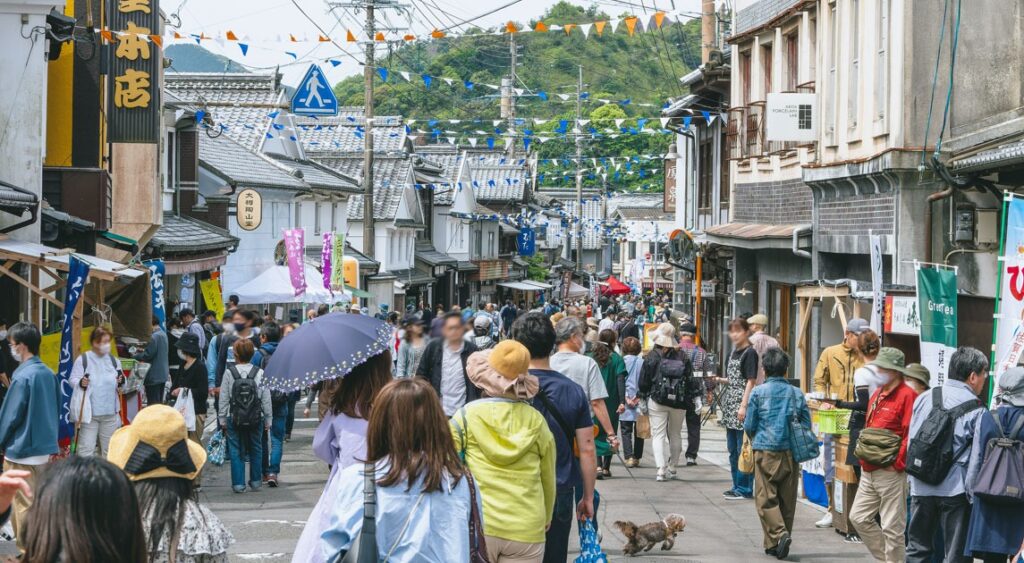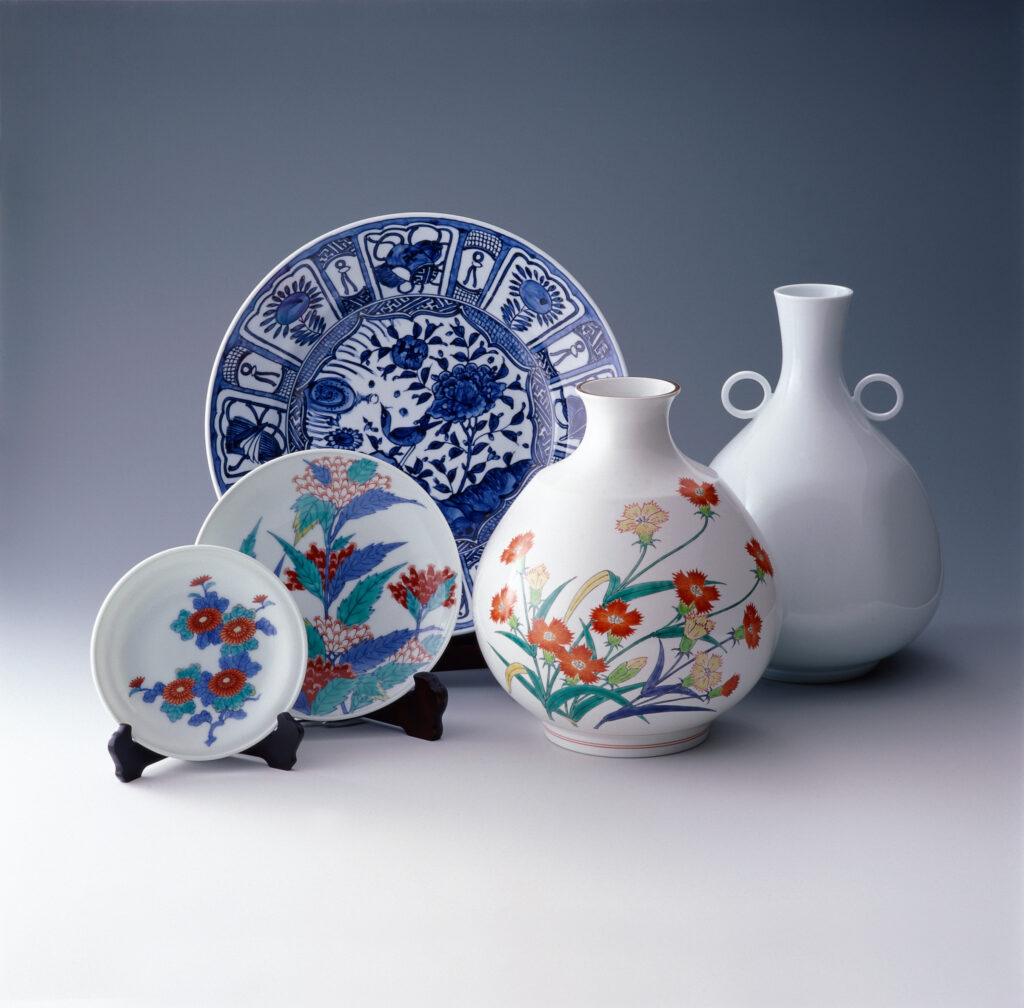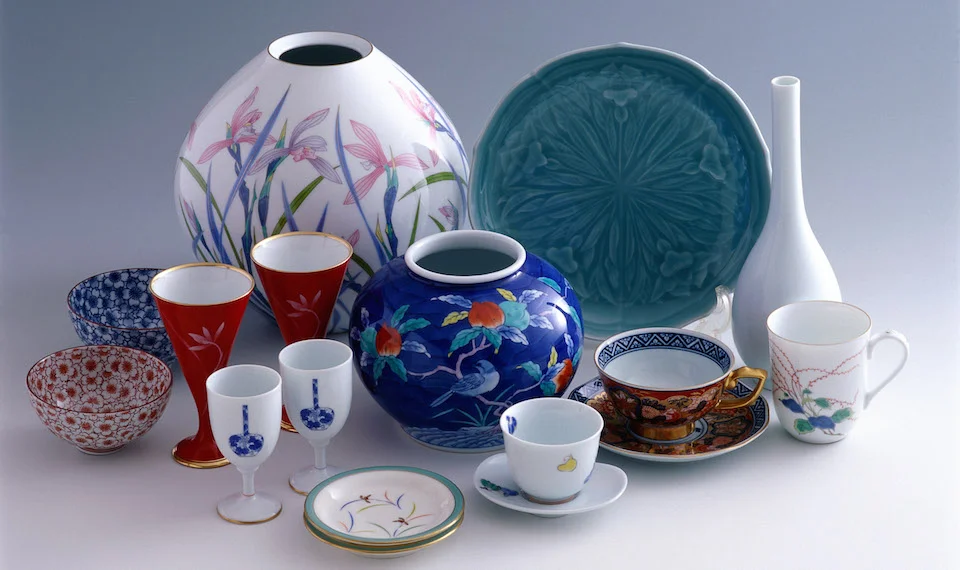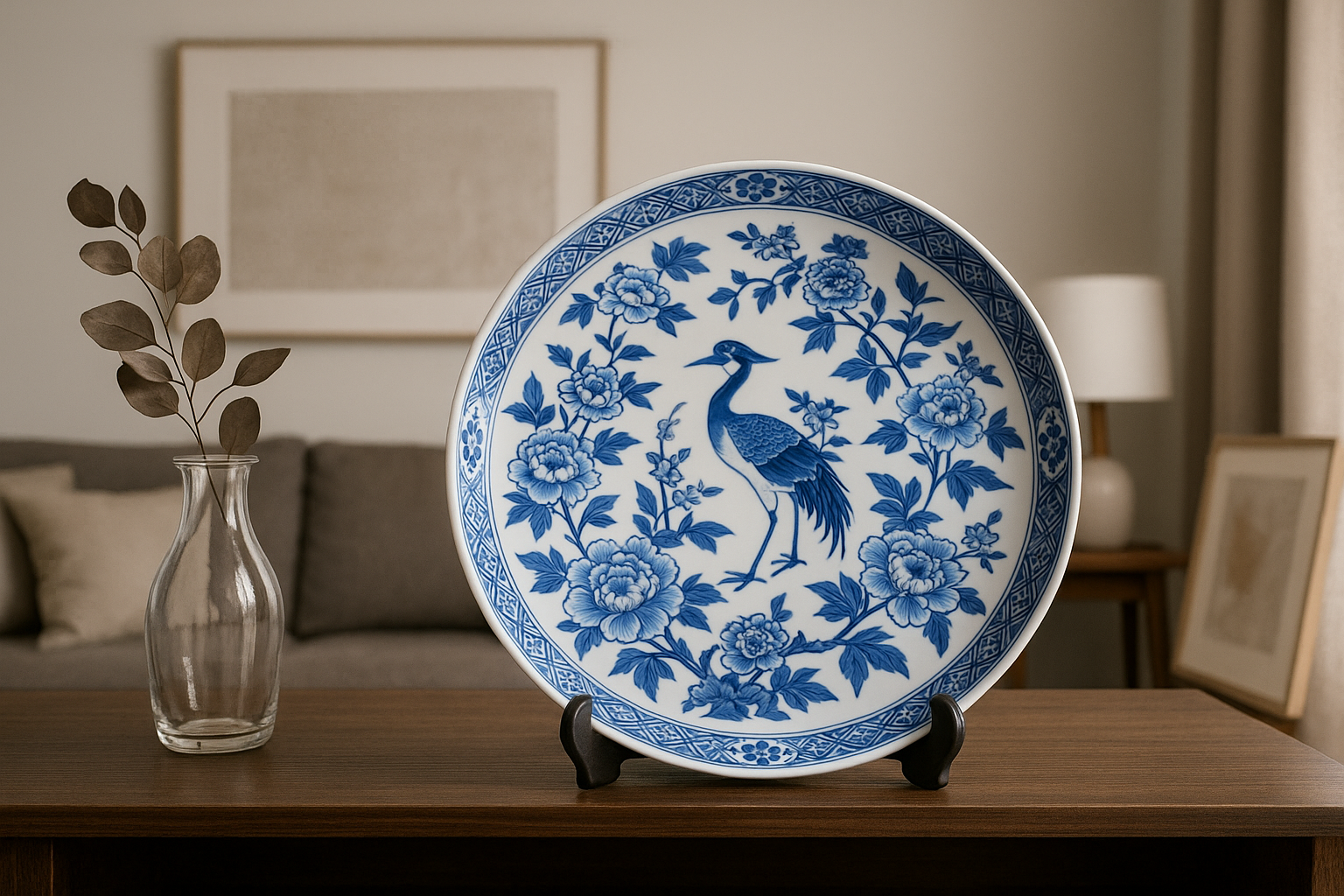🧓 Grandpa says…
“Porcelain might be just clay and fire to some people.
But in Arita, it’s pride and memory, shaped into form.”
「磁器なんて、土と火だけさ――そう言う人もいる。でも有田じゃ、あれは“誇り”と“記憶”を形にしたものなんだ。」

🇬🇧 English
I first visited Arita when I was still young. The hills were quiet, the kilns were warm, and the people—well, they always greeted you with a smile.
Back then, I didn’t know these simple white porcelain plates would someday sit on the tables of royalty in Europe.
Arita porcelain, also known as Imari ware, began its journey in the early 17th century.
The discovery of kaolin clay in the area enabled local artisans to create Japan’s first porcelain.
During the Edo period, Arita porcelain gained popularity overseas, especially in Europe.
The Dutch East India Company played a key role in bringing it across the seas.
The vivid overglaze decorations—especially in the Kakiemon style, with its bright reds, greens, and blues—captivated European aristocrats.
They weren’t just buying plates. They were buying pieces of Japan.
Even today, the town of Arita preserves this tradition.
Modern craftsmen blend timeless techniques with modern beauty, carrying the spirit of Arita into the future.

🇯🇵 Japanese Translation(日本語訳)
私が初めて有田を訪れたのは、まだ若い頃だった。
丘は静かで、窯は温かく、そして人々は……そう、いつも笑顔で迎えてくれた。
当時は思いもしなかった。
この素朴な白い磁器が、やがてヨーロッパの王室の食卓に並ぶなんて。
有田焼(伊万里焼としても知られる)は、17世紀初頭にその歩みを始めた。
地域でカオリン(陶石)が発見され、日本で初めての磁器がここで生まれた。
江戸時代、有田の焼き物は海外、特にヨーロッパで高く評価されていった。
オランダ東インド会社がその輸出に大きく貢献した。
中でも「柿右衛門様式」に見られる赤・緑・青の鮮やかな絵付けは、ヨーロッパの貴族を魅了した。
彼らは、ただの皿を買ったのではない。日本の“美”を手に入れていたのだ。
現在でも、有田の町ではこの伝統が守られている。
現代の職人たちは、昔ながらの技と現代的な美意識を融合させ、有田焼の精神を未来へとつなげている。
📚 Did You Know?
- “Imari ware” gets its name from the port of Imari, where these porcelain wares were shipped to Europe.
- The famous Kakiemon style was so influential that European manufacturers—like Meissen in Germany—started imitating it in the 18th century.





コメント